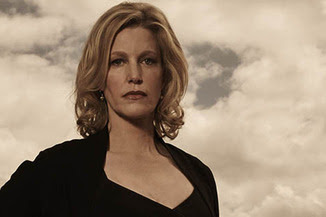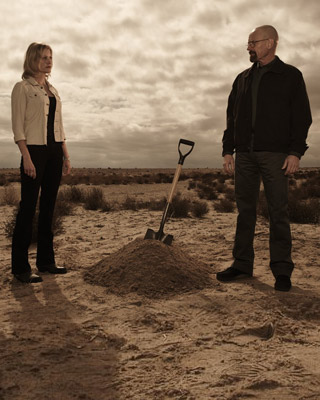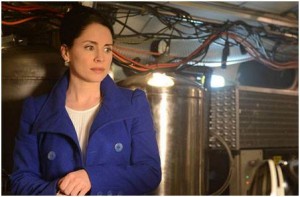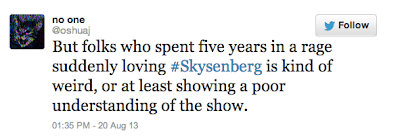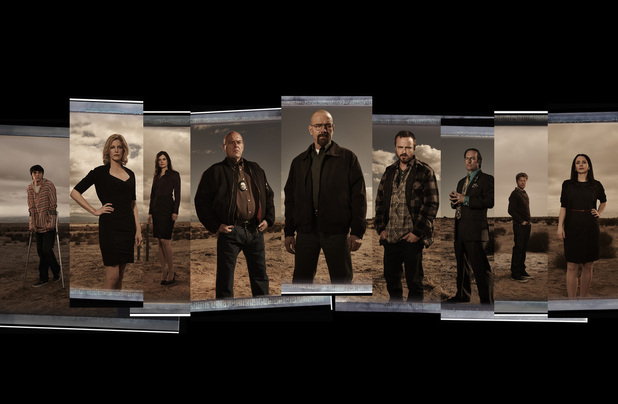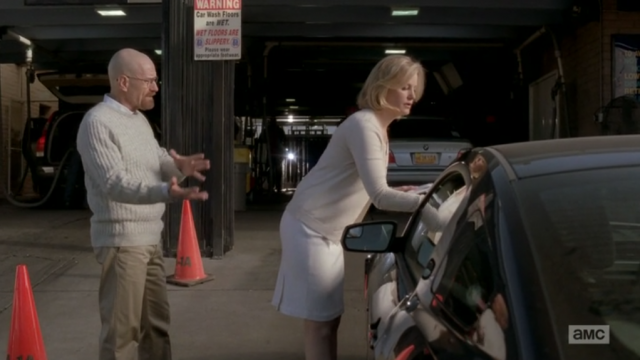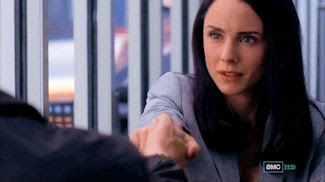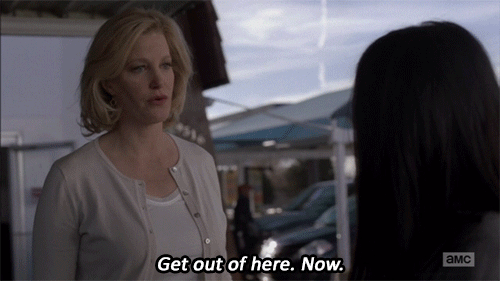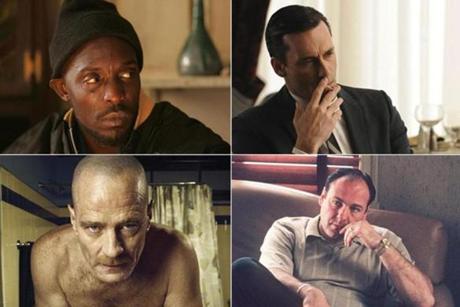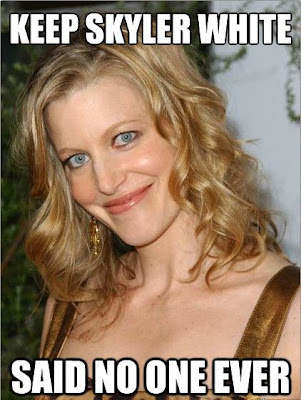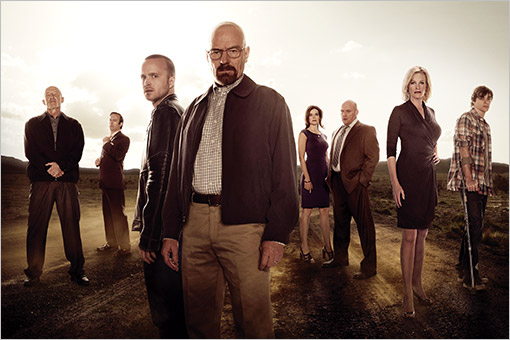 |
| The cast of Breaking Bad |
Warning: Spoilers Ahead
Season five of Breaking Bad began with the unraveling of Gus Fring’s drug operation, which had served as a puppeteer for most of the cast during the preceding seasons. The second episode, “Madrigal,” is named for the German parent company of Fring’s Los Pollos Hermanos. While the business of fast food and methamphetamine is set firmly in a modern era–especially feeding off the addictions of desperate Americans–the term “madrigal” brings to mind centuries’ old songs, performed by multiple voices singing in harmony. We can expect Breaking Bad to be as artfully and tightly constructed as a traditional madrigal. This season, however, the voices won’t just be men’s.
For the majority of
Breaking Bad’s critically acclaimed run on AMC thus far, the female characters have mostly served as annoyances and scapegoats for the audience. The
hatred for
Skyler White, especially, is palpable and vicious.
Her husband, Walt, the ultimate modern anti-hero, has had the audience in his corner from the moment he was diagnosed with cancer. It doesn’t matter how many young women he watches choke to death in their own vomit. It doesn’t matter how many children he tries to poison. Nobody on Facebook
wants him dead.
In the last two episodes of season five, however, women have come to the forefront of making or breaking the plans of the great male trinity of Walt, Jesse, and Mike. The men in the series have done what they wanted (or felt they needed to do), and have been clawing for, and getting, power as they go. The women, however, have had to navigate the systems around them to go forward in their lives. Skyler frantically establishes control over her life, and Lydia (a Madrigal executive who was part of Fring’s team) eventually allows the trinity to continue making meth.
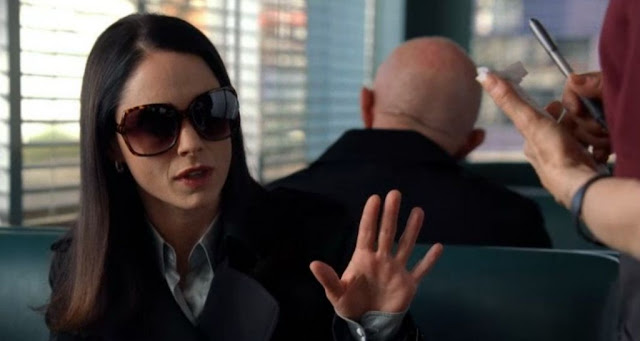 |
| Lydia, one of Fring’s former associates, takes the reins in the new meth operation. |
Skyler has clearly reached a breaking point in her new, seemingly settled life with her dangerous husband. She doesn’t want her children in the home in order to protect them. In episode four, she dutifully makes Walt a birthday dinner, and sits down to eat with him, Marie (who has received her share of “annoying wife” eye-rolls), and Hank. She is clearly detached and disoriented. Hank and Marie credit her infidelity–which Walt told them is at the root of all of their problems–with her despondence. She gets up and wanders towards the pool, slowly stepping in. She submerges herself, and when she doesn’t return to the surface, Walt saves her (although one might wonder if he would have without an audience). The image of a trapped, miserable wife drowning herself is nothing new–it’s the ultimate representation of suffocation. Because she certainly seems unstable, Hank and Marie agree to take the kids for the time being. She has won this battle.
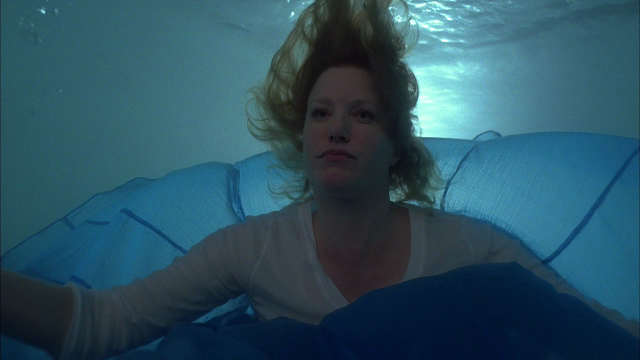 |
| Skyler attempts to drown, and succeeds in having her children removed from their home. |
After floating in the watery depths with Skyler, the audience is jerked to an electric grid operated by Lydia. Two women, juxtaposing water and electricity, a deadly combination.
In episode five, Lydia is the driving force behind the train heist that allows the men to procure the methylamine that is necessary for their product. Her power and knowledge from serving as an executive allows them to move their business forward. Lydia proves herself time and again (stemming from a desire to protect herself for her child), even though her nervous energy makes the audience clench.
The series started with Walt’s crisis of masculinity, in terms of how he could “protect” his family from the cost of his chemotherapy and his paltry income. He was the wage-earner in the household, and had a son and a baby on the way. He began cooking meth to protect his family, and we loved him for it.
As
Skyler has moved from a clueless wife, to an accomplice, to Walt’s antagonist, she has had the goal of protecting her family every step of the way. She orchestrated the money-laundering car wash, she has saved Walt, and she saved a former boss–and herself and Walt–from the IRS (for now, at least). And we hated her for it.
 |
| Skyler did everything in her power to keep the IRS away from her professional and personal business. |
Lydia, who is willing to kill to keep herself and her history safe, is only working with the men in order to protect her child. When Mike had a gun to her head (after she’d put a hit out on him), she begged him to kill her and make sure her young daughter found her body so she wouldn’t think she’d abandoned her. Mike has a change of heart, or perhaps he simply realizes she’s the source of methylamine they need. Before she proves herself as helpful to their cause, Mike says, “I gave her a pass; this is what I get for being sexist.”She proves herself invaluable, in part by saving them from taking GPS-outfitted methylamine.
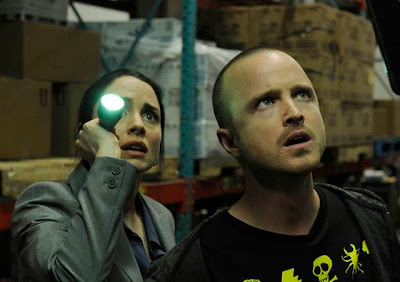 |
| Lydia points out the GPS device to Jesse. The men suspect she planted it, but she ended up saving them. |
These passing comments and the clear symbolism of female repression and underlying power make it clear that
Breaking Bad isn’t simply a tour de force of masculinity. The negative reactions to the female characters reveal misogyny in the audience, not in the series. The fact that we are exhilarated by men plotting and killing, and are nervous or annoyed when the female characters attempt to navigate their lives tells us more about ourselves than the characters.
This season–the first half of the final season, which is set to air next summer–is poised to be decided by women.
Walt’s hubris has completely removed him from being a loving father or anything but an abusive husband. His growing god complex probably can’t end well, and the audience is becoming more and more OK with that. Walt is a twenty-first century
Macbeth.
Skyler, while beyond her breaking point, has gotten her way for now and the children are out of the house. The cards are in her hands more than Walt is comfortable with. She will keep risking herself for her children, and waiting. “For what?” Walt asks. “For the cancer to come back,” she says.
Without Lydia, the men are without their “ocean” of methylamine. She–like the ocean–is a feminine life-giver, and is orchestrating her moves to protect her daughter (from “group homes” if she herself was sent to prison). She has control.
The imagery of Walt, Mike, and Jesse as a holy trinity is becoming clear. Jesse as a Christ-figure is more evident than ever, in his sacrificing his relationships and fighting passionately for nonviolence. And much like traditional religion,
men are worshipped while women are in the trenches, cooking and cleaning–literally and figuratively. We celebrate the men, and push aside the women. It’s becoming evident that we’re not supposed to be doing that.
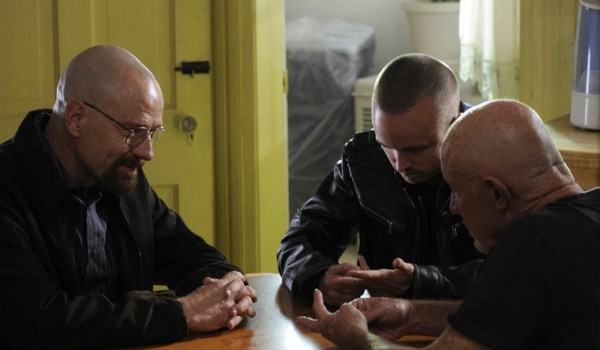 |
| The “trinity” |
At the beginning of the last episode, a young boy, riding alone in the desert, picks up a tarantula and gently puts it in a jar, screwing the lid tight. This clear symbol of entrapment echoes what Skyler says to Walt later in the episode: “I’m not your wife–I’m your hostage.” While her character has clearly broken bad and is now breaking down, she is still entrapped by her husband’s–and now her own–crimes. The tarantula must shed its old skin to grow, as must Skyler.
That boy is killed at the end of the episode (as he’s witnessed the train heist), and one must wonder if his fate may represent Walt’s. The tarantula is still trapped after his captor is killed, just like Skyler, if her life is spared, will always be trapped by this life. Perhaps Walt, like
Arachne, will be punished for his pride above all else. Or maybe Skyler, like
Lady Macbeth, will keep unraveling out of fear and guilt, and that will lead to her downfall. One could also draw a comparison between the young boy and Jesse, suffering while trying to keep captive the beasts of others’ actions.
The tarantella (tarantula), an Italian folk dance originated hundreds of years ago, is identified by “
frenzied” dancing. The mythology suggests that the dance cured spider bites by allowing the dancer to sweat out the poison. It’s a safe expectation that audiences will be seeing much frenzied dancing as
Breaking Bad culminates its five-season run, and only a few of those dancers will be left standing.
—
Leigh Kolb is an instructor at a community college in rural Missouri. She teaches composition, literature, and journalism courses. While working on her MFA in creative nonfiction writing, Leigh was the editor of a small-town newspaper. In her academic and professional life, she’s always gravitated toward the history and literature of the oppressed, and wants to see their stories properly inserted into our cultural dialogue. She believes that critically analyzing popular media is an important step in opening those conversations. Leigh lives on a small farm with her husband, dogs, cat and flock of chickens.
